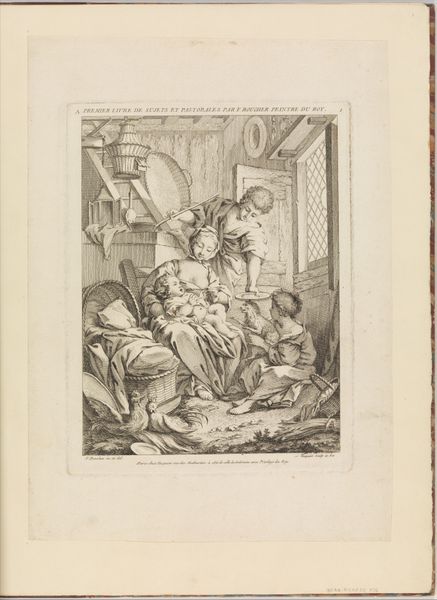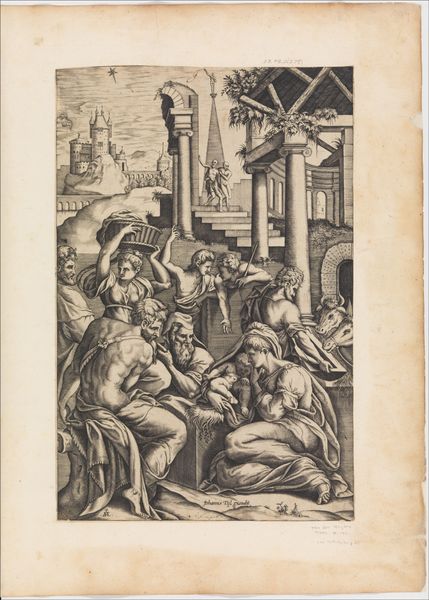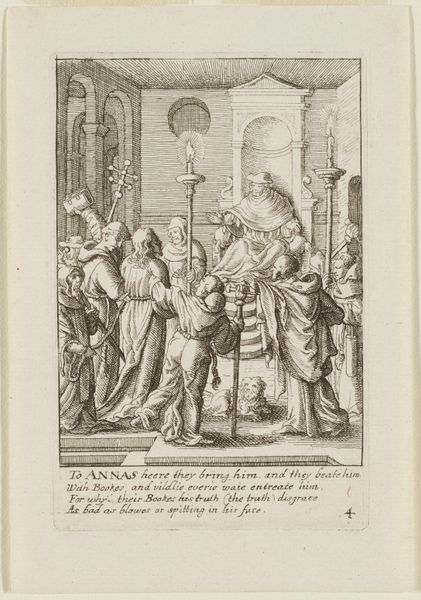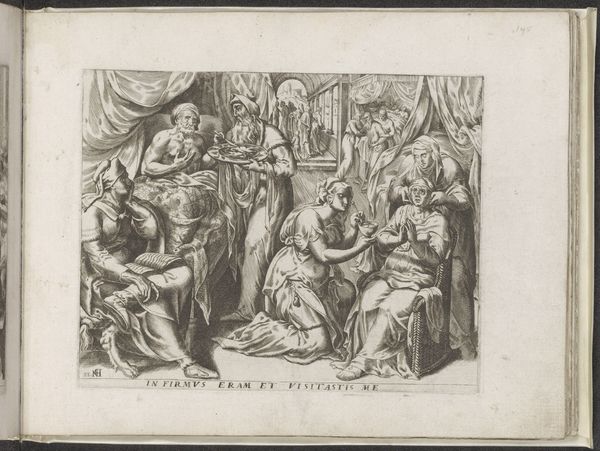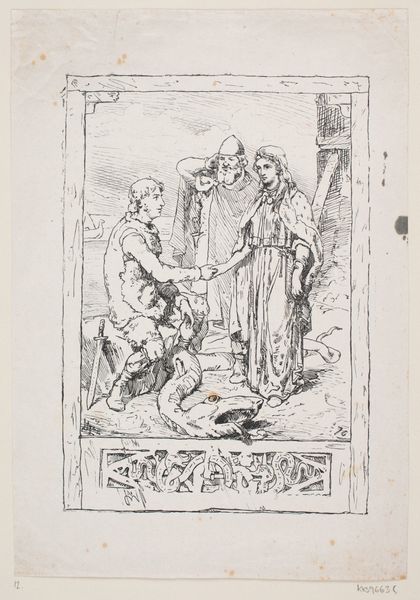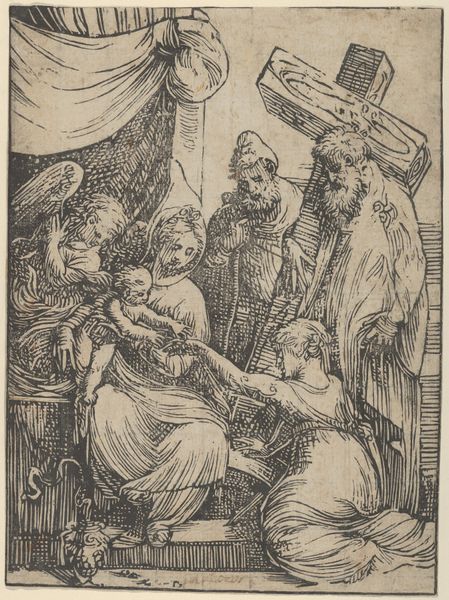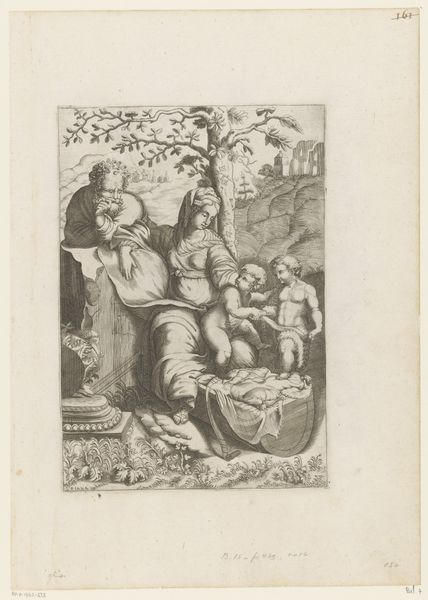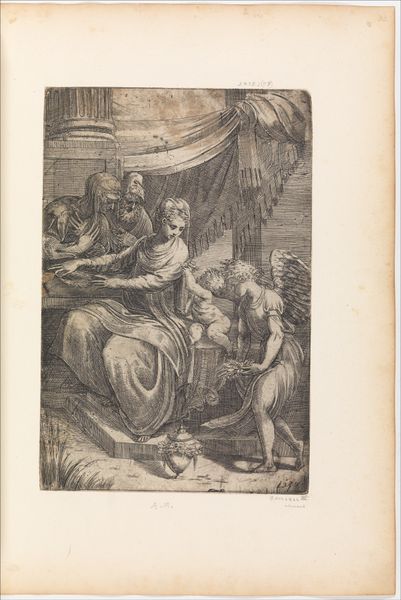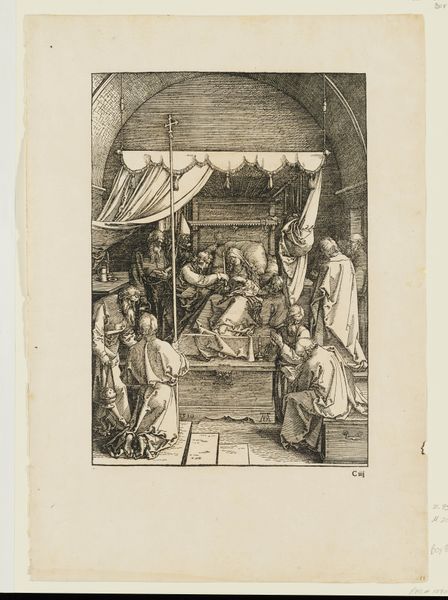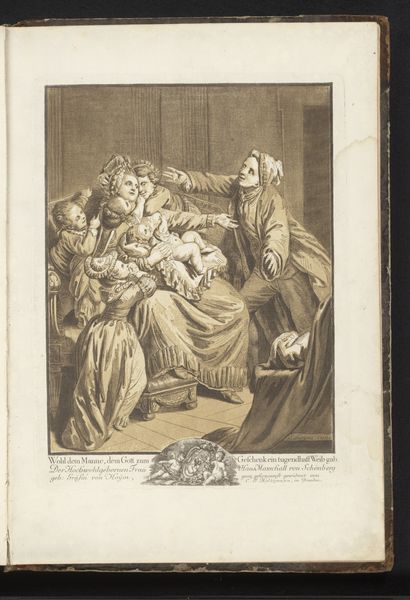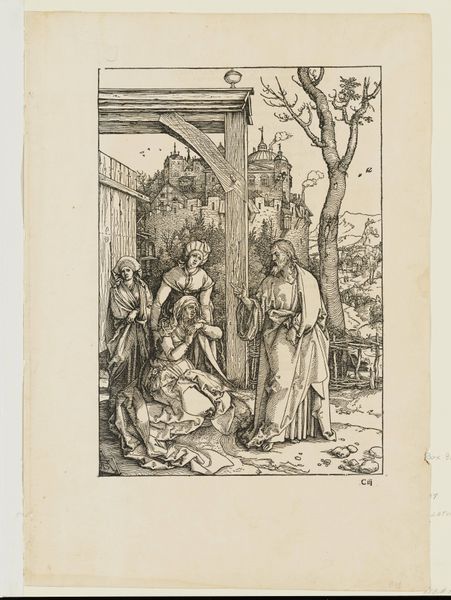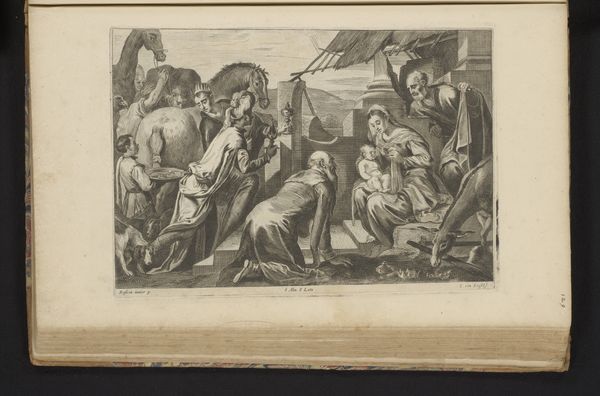
The Mystic Marriage of St. Catherine, with St. Joseph, an Angel, and a Cross-bearing Saint 1510 - 1563
0:00
0:00
drawing, print, paper, ink
#
portrait
#
drawing
#
allegory
# print
#
figuration
#
paper
#
ink
#
genre-painting
#
italian-renaissance
#
angel
Copyright: Public Domain
Curator: Andrea Schiavone's "The Mystic Marriage of St. Catherine, with St. Joseph, an Angel, and a Cross-bearing Saint" offers such a fascinating look into the artistic and religious climate of the Italian Renaissance. Executed sometime between 1510 and 1563, this drawing in ink on paper depicts a symbolic union central to Catholic tradition. Editor: Immediately, I'm struck by the somberness despite its depiction of a marriage. The monochrome palette and almost frenetic energy of the lines create a serious, even troubled mood. There's a palpable sense of drama. Curator: Schiavone lived and worked during a period of tremendous social and religious upheaval. His native Dalmatia, caught between Venetian rule and Ottoman expansion, lends an interesting perspective to works focused on theological narrative. Remember, the role of prints and drawings at this time served the need to illustrate biblical events, thus educating a largely illiterate populace on dogma, shaping understanding on subjects like marriage, power and sacrifice. Editor: It is clear that the piece depicts marriage but also highlights an uneven power dynamic, both between genders and spiritual hierarchy, evident in Saint Catherine’s kneeling position to receive the ring, even when being attended by regal St. Joseph or cherubic angels. Also, St. Joseph's deliberate and rather severe gesture of holding the cross presents a clear statement on expectations of pain and endurance in traditional marriage narratives. The image reflects an institution upholding values which, when viewed with contemporary intersectional frameworks, reinforces inequitable social structures. Curator: Exactly, it underscores how art both reflected and perpetuated specific ideologies, making them both believable and visually appealing to patrons of the art and viewers in public life. Its institutional relevance within the broader visual culture underscores how those biases become formalized and influential. Editor: Absolutely. The distribution of art impacts culture. I leave here seeing how historical visual narratives inform societal power imbalances. The politics of the gaze here show enduring traditions as worthy of our continual analysis. Curator: Indeed, seeing the piece today gives much-needed food for thought as to how social values inform, and are informed by, artworks on display in public institutions.
Comments
No comments
Be the first to comment and join the conversation on the ultimate creative platform.
